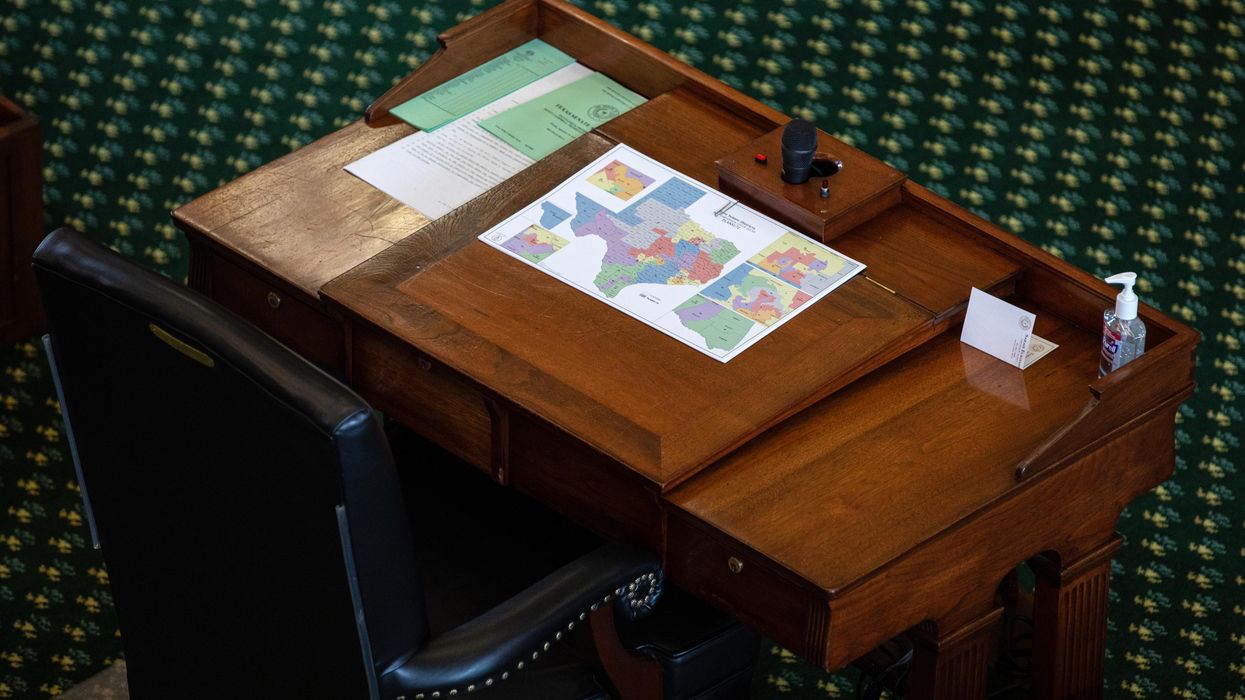Goldstone’s most recent book is "On Account of Race: The Supreme Court, White Supremacy, and the Ravaging of African American Voting Rights."
To successfully govern, the United States, like all democracies, must effectively navigate among competing ideologies. When competition is manifested by vigorous debate leading to compromise, democracy works. If, however, ideology begets hyperpartisanship, then dysfunction, paralysis or even civil war can be the result. The inevitability and pitfalls of adversarial government were recognized by the nation’s founders, who attempted to build safeguards into the Constitution.
At the convention in Philadelphia in 1787, the main ideological rift was between those who favored a strong central government, such as Alexander Hamilton (ironically called Federalists), and those who favored states retaining much of the autonomy they enjoyed under the Articles of Confederation. Although this is often referred to as the big state/small state divide, anti-Federalists were often from large states themselves (such as New York’s Robert Yates).
Many of the delegates, most notably James Madison, tried to mitigate factionalism with a design that would require give and take while avoiding what has become known as the “tyranny of the majority.” In “Federalist 51,” Madison wrote that power in the new government “will be broken into so many parts, interests, and classes of citizens, that the rights of individuals, or of the minority, will be in little danger from interested combinations of the majority.” To avoid centralizing power, the Constitution mandated a population-based House of Representatives, a state-based Senate, an Electoral College that combined the two, and an independent executive and judiciary. Other potentially fatal issues, such as slavery and the regulation of commerce were all parts of a series of compromises that allowed the final document to be approved (sometimes grudgingly) by almost everyone, thereby appearing to justify Madison’s faith.
But his pluralist construct soon came undone when the nation cleaved into two bitterly opposed ideological camps, one led by Federalists John Adams and Chief Justice John Marshall, and the other by Thomas Jefferson and, ironically, Madison himself, who abandoned Federalism for Jefferson’s populist approach. Those competing visions coalesced into powerful political parties and since then the United States has, with varying degrees of success, fought to avoid ideological divides so deep that they prevented not only compromise but even the willingness to recognize the legitimacy of whichever faction happened to be in power. It does not take a great deal of examination to recognize that the nation is currently mired in one of its less successful phases.
The problem is not in the belief systems that elected representatives or ordinary people favor, but rather when ideology becomes ossified and an excuse to abandon critical thought — when, instead of evaluating a problem on its merits, zealots merely shove the particulars into whatever little box their ideology dictates.
Such rigidity is both dangerous and lazy — no ideology corners the market on wisdom, knowledge or problem solving — and implies complex problems have simple solutions that are devoid of consequences. In politics, if the honest consideration of a range of alternatives becomes anathema, negotiations even to agree that a middle ground exists may be precluded, and ideology will thus breed the very sort of sclerotic government Madison was desperate to deter. Such a trap becomes almost impossible for elected officials to avoid when the electoral system encourages, even demands, ideological purity in those running for office. Primaries, for example, are notorious for tilting voter turnout toward the extreme wings of either party and, with gerrymandering widespread, often makes gaining the nomination more of a challenge than competing in the general election. Quite understandably, those elected under such a system come to see their principal obligation as defending ideology rather than making any effort to achieve consensus. Those straying from that dogma — Republican Rep. Liz Cheney, for example, or Democratic Sen. Joe Manchin — are ostracized as heretics.
Ideological boxes exist outside of government with similar impact. One area in which ideological purity can have a particularly deleterious effect is higher education. In colleges and universities, students are supposed to be learning how to be more effective critical thinkers, but currently the “cancel culture” — on both sides — is encouraging anything but. In addition, academics often attach themselves to theoretical constructs in which it becomes more important to squeeze data into the theory than to allow the theory to expand to fit the data.
Because of the outsized role the Supreme Court has seized in American governance, the judiciary has become perhaps the most treacherous battleground in the ideological war. Almost without exception, recent justices have operated under one or another “legal philosophy,” which is ideology by another name. Conservatives favor “strict construction,” “textualism” or “originalism,” which despite some minor differences will tend to end up in much the same place. Liberals favor “broad construction” or a concept called “moral reading,” which employs the principles embodied in the Constitution to arrive at judgments that emphasize justice and fairness over specifics of language. In either case, however, excessive reliance on theory has often resulted in a distortion of the laws that judges and justices are assigned to interpret without regard to personal belief.
Democracy demands intelligence and diligence not only from its elected and appointed officials, but from the citizenry as well. Abandoning critical thought for unquestioning acceptance of doctrine leaves those being governed vulnerable to being manipulated and misled. Many of the Founders, including Adams, Hamilton and Madison — before he switched sides — were in favor of restricting the vote to the educated and property holders, convinced that lesser citizens would be swayed by outside influences and might well vote against both their own interests and the best interests of the nation. Once again, even a cursory glance over the political landscape would seem to indicate that their misgivings were justified, although their favored groups are often as prone to manipulation as those they would have kept from participating in the political process.
While a system of beliefs is important in creating a moral foundation and a basis for decision making, when ideology works at the expense of truth, wisdom and personal responsibility, the very purpose of adopting those beliefs is defeated. In order to remain a thriving democracy — or perhaps any democracy at all — Americans need to recognize the limits of ideology, including their own.



















